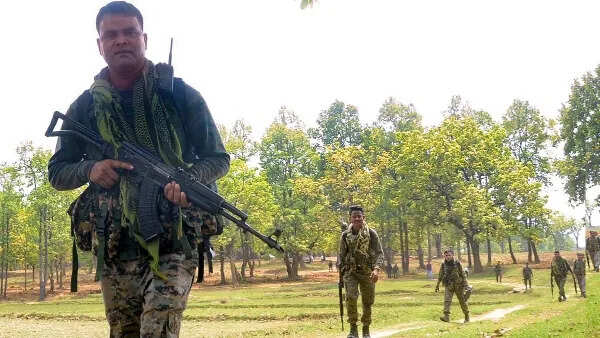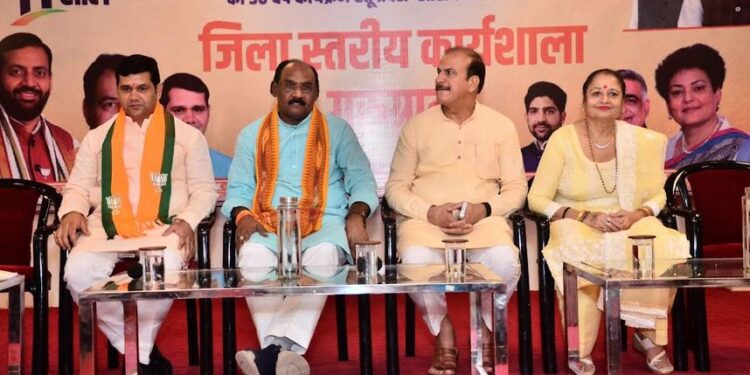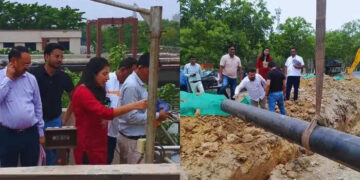Naxalism is not a new threat in India. For decades, many parts of the country have been under the shadow of Maoist terror, where innocent civilians, security forces and public representatives faced landmine, deadly attacks and ruthless killings. Although the previous governments considered Left Wing Extremism – LWE a serious internal threat, while the Congress -led UPA strategy often saw softness, while the BJP -led NDA government after 2014 has shown a decisive change in dealing with this challenge.
UPA’s era strategy: was intention, but no effect
Between 2004 and 2014, the UPA government led by Manmohan Singh made several efforts like Integrated Action Plan (IAP) and Operation Green Hunt, accepting the seriousness of the Naxal problem. The purpose of these schemes was to add development and security, but their implementation was not effective. The UPA government took most of the time defensive stance, where dialogues and socio-economic schemes were given priority, and the use of force was considered the last option. Although this can be a human approach, but when it comes to armed militants, the solution is difficult only with dialogue. Lack of intelligence information, lack of coordination between central and state forces and strict action made the Naxalites stronger. As a result, many areas of the country remained under Naxalite influence and the level of violence remained continuously high.
Modi government’s decisive policy: clarity, resolution and coordination
After 2014, the NDA government led by Narendra Modi adopted a clear, rigid and coordinated strategy to deal with Naxalism. Under the leadership of Home Minister Amit Shah, the government launched intelligence based campaigns like “Operation Prahar” and “Operation Octopus”. Drone, satellite imaging and grassroots intelligence networks were effectively used in these campaigns, which eliminated many of the Naxalite bases without damaging any common citizen. The government’s policy was clear: No interaction before laying arms, zero tolerance for violence. While the UPA used to take a soft attitude, the Modi government gave a message from tough decisions that there will be no compromise on the security of the nation.
Blow with development weapons
The Modi government’s strategy was not limited to military action only. The government also understood that permanent peace is not possible in Naxal -affected areas until there is basic development. Through schemes like Pradhan Mantri Gram Sadak Yojana (PMGSY) and Bharatmala Project, the government linked the remote tribal areas to the mainstream. These roads not only brought the market and schools near, but also brought administration, law and order and accountability. At the same time, the government’s rehabilitation policy also showed an impact. Hundreds of Naxalites have adopted normal life by surrendering and have got the opportunity of vocational training, financial assistance and respectable life.
Statistics speak: There is a huge decline in violence
According to the data of the Ministry of Home Affairs, Naxalite violence has declined by 77%, while the deaths of citizens and security personnel have decreased by 85%. These are not only figures, but hundreds of lives are left, many families have survived the desolation and a large part of the country has returned to the mainstream again.
Operation Kagar: Symbol of decisive war
Operation in the dense Kareguttalu forest of the Chhattisgarh-Telangana border is a lively example of a new policy against the Naxalism of the Kagar government. More than 1,00,000 paramilitary forces have been deployed in this operation. So far, three women Maoists have been killed and around 44 Naxalites have surrendered. However, the absence of big Maoist leaders indicates that they managed to escape before the security forces arrived. Inaccessible territory, about 1,000 armed militants and despite frequent threats, are constantly carrying on the security force campaign. Strategic hills have been occupied, the tricolor has been hoisted and the search operations have been intensified through drones and satellites. This is not just an operation, but a clear message of India’s sovereignty that each inch area of the country will be freed from Naxalism.
Opposition’s old thinking: again the raga of the same dialogue
While the central government is taking decisive action, some opposition leaders are again talking about the strategy of old dialogue. Telangana Chief Minister Revanth Reddy and KCR’s daughter K.K. Kavita has advocated talks with Maoists on open forums. This is the same policy that made the Naxalites more powerful during the tenure of the UPA government. Even in some reports, there are allegations that during Operation Kagar, the Telangana Congress government gave some top Maoist leaders a chance to cross the border. This not only affected the pace of the campaign, but also raised the question whether the national interest is being compromised for political gains?
BJP’s clear message: ‘Get arms or kill’
Minister of State for Home Sanjay Kumar has made it clear that the government will not communicate with such people who take up arms and kill the innocents. According to him peace is possible only when the system is restored – not between violence and political bargaining. Telangana and Andhra Pradesh were once considered a stronghold of Maoists, where militant organizations such as People’s War Group dominated. These areas were freed from Naxal influence after years of strict policy and security campaign of years. By 2021, the Maoist encounters in Telangana had reduced greatly and surrendered by more than 250 militants in the same year.
Result of decisive leadership
While the UPA governments hesitated to deal with Naxalism, the NDA government has given a new direction to the country by taking concrete steps. Today, when Naxalism is almost towards the end, then we have to understand that the price of peace is paid with decisive action and strong will – not from the politics of appeasement. The Modi government aims to make the country completely Naxal -free by 2026, and now that concrete progress is being made towards this goal, it would not be wrong to say that India has now moved out of the darkness to the light of development and security.






